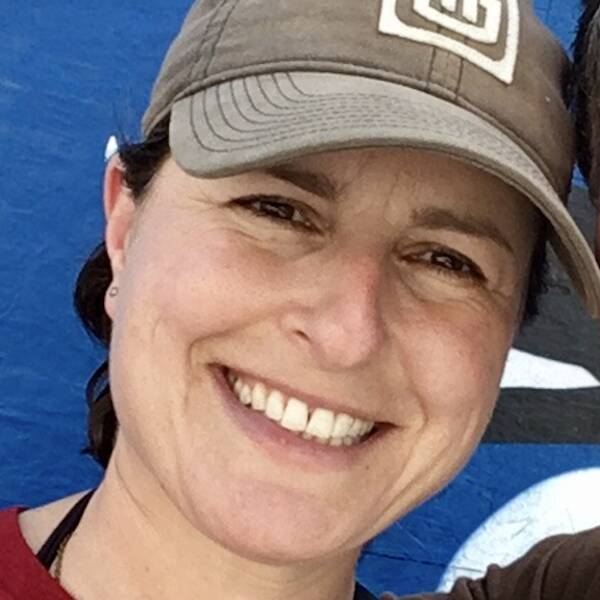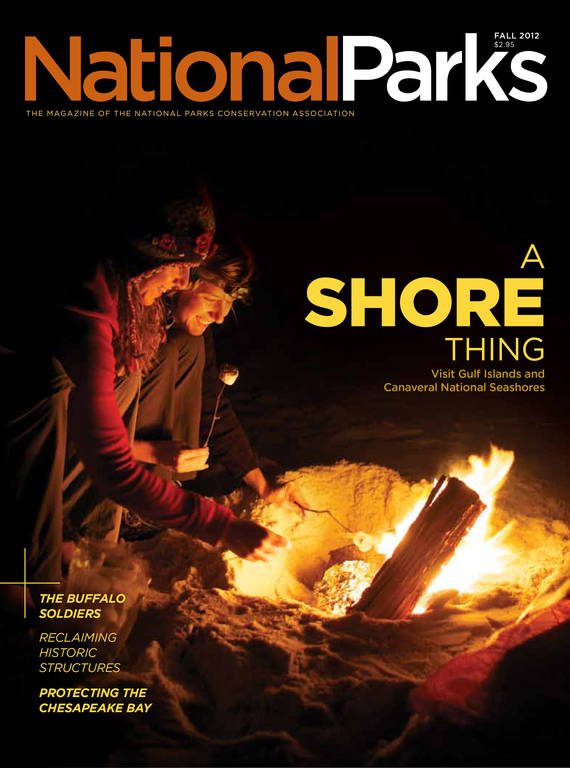Fall 2012
Back to the Land
What on Earth does farming have to do with the Chesapeake Bay? As it turns out, everything.
Terry Ingram stands just outside the milking parlor on his Brandy Station, Virginia, dairy farm and faces a panorama that has an unyielding power to calm.
“Come ooooon,” he yells, cupping his hands around his mouth as his voice carries across the open pasture. He yells again. Several minutes later, a group of cows in the distance ambles out of a small cluster of trees. Calves scamper alongside their mothers as the herd follows a path to a new section of grass, mooing all the way.
THE FARM BILL
Thanks to a number of changes Ingram has made since his grandfather owned the farm, his dairy cows are now 100 percent grass-fed. Not only are the animals faring better (Ingram points to horizontal “happy lines” on their coats, indicating they’re healthy and content), but this farmer knows he’s doing his part to protect the landscape and reduce environmental impact.
Although the Culpeper County farm is 75 miles from the Chesapeake Bay shoreline, Ingram appreciates the connection between his operation and the health of the largest estuary in North America. “Growing up in the ‘80s, I remember the Save the Bay stickers,” he says. “I understood they wanted to protect the Chesapeake Bay, but I thought it was more industrial pollution or the stuff that people pour down the drain,” he says. “Now I know that anything that touches that stream affects the bay.”
To learn what farmers like Ingram are doing to help reduce pollution that ends up in the Chesapeake, I drove southwest from Washington earlier this year, away from the bay. The green hills rippled like roller coasters, and I passed signs that advertised bulls and straw. On the dirt road leading to Ingram’s farm, another sign read: “2009 Bay Friendly Clean Water Farm Award,” and I was reminded that even in farm country, there’s no ignoring our treasured waters.
The Protein Factory
The estuary that H.L. Mencken once called an “immense protein factory” encompasses roughly 64,000 square miles and almost 12,000 miles of shoreline in six states and the District of Columbia. More than 3,600 species of plants and animals live along the region’s marshland, rivers, and streams; the bay once produced 25 million bushels of oysters a year and half of the nation’s blue crabs. And it’s hard to overestimate the opportunities for recreation in the watershed, which is home to 54 national park sites—the health of which are directly influenced by the waters that flow around and through them. For those of us who are lucky enough to live close to the bay, it is our refuge, our playground, our haven.
But the watershed’s human population—17 million and growing—is causing serious damage to the bay and its fish and wildlife. Today, the Chesapeake harvests only 200,000 bushels of oysters a year and just one-third of the nation’s blue crabs. Every time a parking lot or shopping mall is built, forests and wetlands that act as natural water filters are destroyed. Without those filters, local tributaries are more contaminated. That pollution is carried into the bay—clouding waters, blocking the sunlight needed by underwater grass beds, and depriving the water of oxygen that underwater creatures so desperately need.
Peter Marx, federal affairs director at the Choose Clean Water Coalition, says by volume, the Chesapeake has the largest land-to-water ratio of any coastal body in the world, which exacerbates the pollution problem. “The bay is extremely shallow—an average of 20 to 21 feet,” he says. “And the watershed is 16 times larger than the bay.” The upshot: What happens on the land in the watershed has an incredible impact on the Chesapeake. “There’s so much land and relatively little water,” Marx says. “We’ve learned over the years that the biggest impacts on the living resources of the bay are nutrients [nitrogen and phosphorus] and sediment.”
Although these nutrients come from a variety of sources—like poorly planned subdivisions where paved surfaces channel lawn chemicals into the bay during heavy rains—agriculture is the largest single contributor, according to the Chesapeake Bay Foundation. When it rains (or land is over-irrigated), excess fertilizers, pesticides, and disturbed soils wash into local waterways like the Susquehanna and Shenandoah Rivers. Animal manure and poultry litter—from as close as the Eastern Shore of Maryland and as far away as Binghamton, New York—contribute about half of the watershed’s agricultural pollution load.
Experts agree that preventing erosion and runoff is more cost effective than treating water once it’s polluted; furthermore, these practices ultimately reduce expenses for farmers. So in agricultural areas, which constitute nearly one-quarter of the Chesapeake watershed, an increasing number of farmers are changing their practices to make their operations more sustainable. Funding for these improvements comes from federal and state programs such as the U.S. Department of Agriculture’s Conservation Reserve Program (CRP). The program encourages farmers to reduce the amount of erosion and runoff from their farms, which, in turn, protects groundwater and nearby streams. For instance, in exchange for not planting crops on these environmentally sensitive lands, CRP pays farmers to plant long-term vegetative covers. According to the USDA, CRP prevents the erosion of 325 million tons of soil each year—enough to fill 19.5 million dump trucks.
A BLUEPRINT FOR CLEAN WATER
Beth McGee, a senior water quality scientist for the Chesapeake Bay Foundation, says farmers have access to funding for nearly every conservation practice that protects water quality. “Farmers generally want to do the right thing,” she says, “but often don’t have the financial resources.” In the watershed states, there are various networks of farmers who have already made changes and are encouraging other farmers to follow their lead.
McGee says planting trees along a stream—creating forested buffers—is one of the most effective ways to filter pollutants. The idea of trading farmland for trees is revolutionary among farmers, but the payoff is huge—not only by filtering but by keeping cows and their waste out of the water.
Marx stresses that well-run farms are one of the best investments in the watershed, because the public values open space. “Preserving farms will keep land open,” he says. “Farms are iconic; they’re part of our landscape and heritage.”
What’s Old Is New
At Ingram’s farm, we stand in the sun and talk about some of the practices he’s adopted for his 400 acres. Rather than house cows in a barn, where manure is concentrated and needs to be removed regularly, Ingram moves his cows from pasture to pasture. There, cattle help earn their keep by distributing the manure themselves—simply by walking around. Fencing along the stream keeps cows out of the water, and stone paths reduce runoff from the cow walkways.
And by moving the animals every 12 hours, Ingram ensures there is enough grass remaining so soil is not exposed; when it rains, nutrients are absorbed into the root structure rather than rolling off the ground into the streams.
“People will come here and say, ‘Look at all that grass you’re wasting,’” Ingram says. “But the grass is feeding the soil. It’s full of earthworm holes, so it’s like a sponge absorbing water. I’m working with nature rather than against it.” He says farmers have been taught for generations that the best way to farm is to maximize production with modern chemistry, like fertilizers.
“It’s improved yields, but at the risk of destroying topsoil,” he says. “If you run things to the extreme, something will suffer.” Ingram, who doesn’t use any pesticides, also doesn’t need to buy feed for his cows. He knows he could get more production per cow if he fed them grain, but when he used to farm that way, the cows were tired, listless, and sick. Now, his operation is healthy and certified organic; Ingram sells his milk to Organic Valley, a cooperative that supplies ingredients for Stonyfield yogurt. “Today,” he says, “I’m producing what the land is giving me.”
Two years ago, Ingram put his farm in conservation easement, an agreement with Virginia Outdoors Foundation that guarantees his land will remain undeveloped in perpetuity. In addition to protecting the air, water, and wildlife, the easement provides tax benefits and helps Ingram sleep better at night, knowing that his farm will never become a subdivision.
These days, Ingram isn’t too far from turning the corner on profit, thanks partly to the Environmental Quality Incentives Program (EQIP), created by the federal Farm Bill. EQIP has a cost-share element that funded the set-up of many of Ingram’s conservation practices, from fencing and livestock water crossings to water troughs and a well. The program offers extra incentives for new farmers and minorities. Ingram acknowledges that he will never become rich farming this way but says these practices are good for the cows, good for the environment, and good for the consumer.
“The most important thing is to recognize the role of the individual at these farms,” says Sue Ellen Johnson, director of Agriculture and Rural Economy programs for The Piedmont Environmental Council (PEC), which was created 40 years ago in part to preserve open space and working farms. The group launched Virginia’s first “Buy Fresh Buy Local” campaign and helps farmers develop new outlets for their sales. PEC also plays a key role in connecting landowners to financial assistance programs, and has helped farmers fence out more than 1,000 cows from streams where they might add to the sediment and nitrogen and phosphorus loads flowing toward the bay.

National Parks
You can read this and other stories about history, nature, culture, art, conservation, travel, science and more in National Parks magazine. Your tax-deductible membership donation of $25 or more entitles…
See more ›Johnson recognizes that it’s often difficult for farmers to change their practices after a family has farmed a certain way for generations. “These people are truly independent thinkers,” she says, “and not afraid to go their own way. Most farmers want to protect their heritage, their livelihoods, their communities and the environment.”
Pamela Goddard, Chesapeake and Virginia Program manager for NPCA, says good conservation practices on working farms are the key to stopping pollution in the Chesapeake Bay. “Terry Ingram has shown us that you can have a viable farm while protecting the community,” she says. “We need to help more farmers tap into these types of programs.”
As Ingram and I walk toward my car, he points out a field of wild mustard. Bees bop around the tiny yellow flowers, butterflies flit, and birds tweet in stereo. A couple of decades ago, Ingram had no intention of farming. But after growing up on the farm and helping his grandfather feed chickens, he says he couldn’t get it out of his blood. Learning about grass farming further persuaded him that working the land—in a sustainable manner—was the life for him. Now, he seems to have no regrets about the path he’s chosen. “My intention is to give these living organisms what they need to thrive,” he says. “And that translates into healthy food for people and an honest living for myself.”
About the author
-
 Melanie D.G. Kaplan Author
Melanie D.G. Kaplan AuthorMelanie D.G. Kaplan is a Washington, D.C.-based writer. Her book, "LAB DOG: A Beagle and His Human Investigate the Surprising World of Animal Research," will be published by Hachette in 2025.



